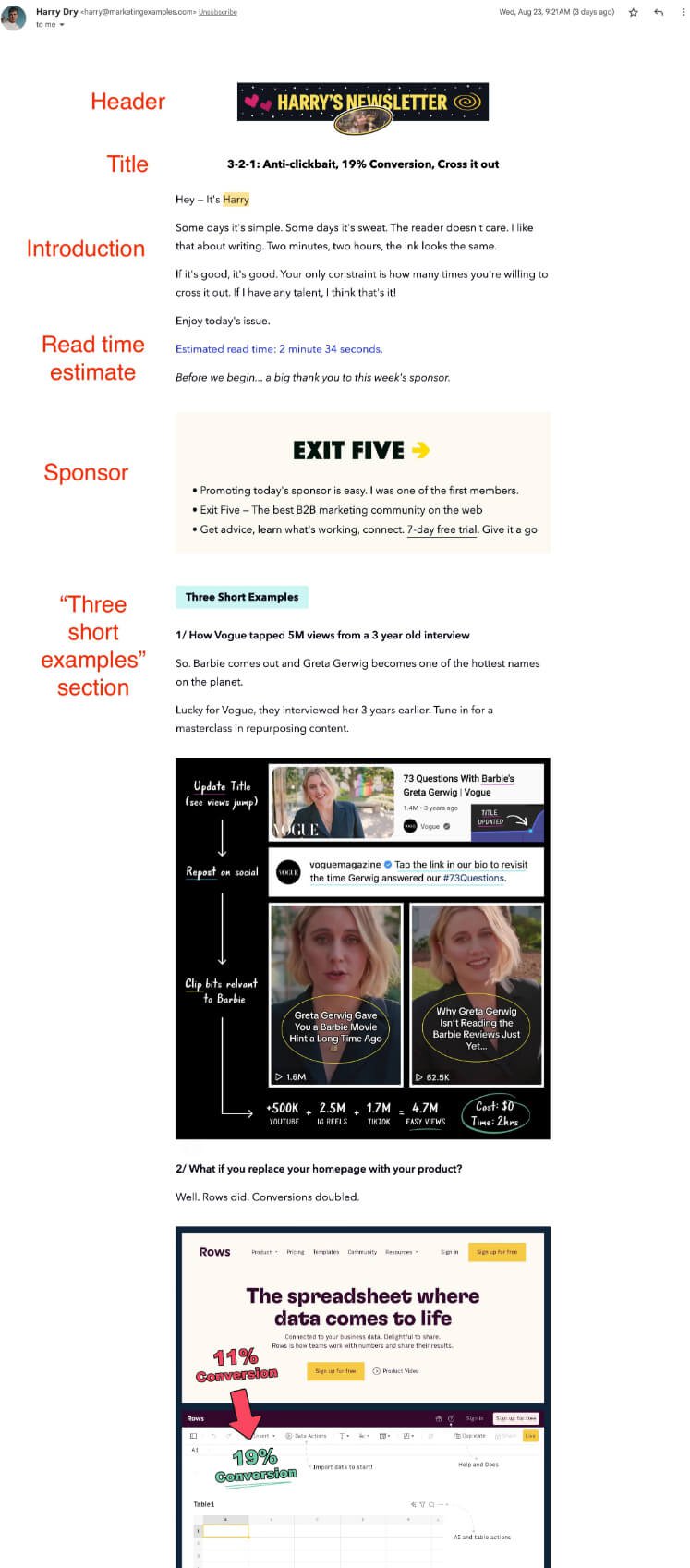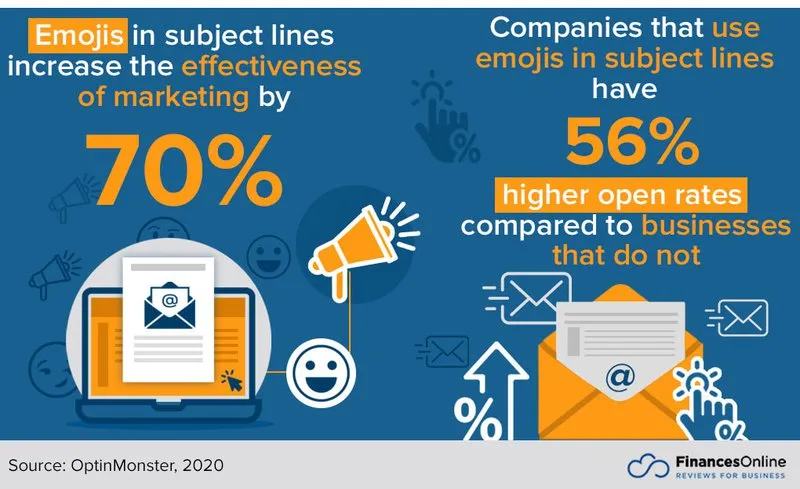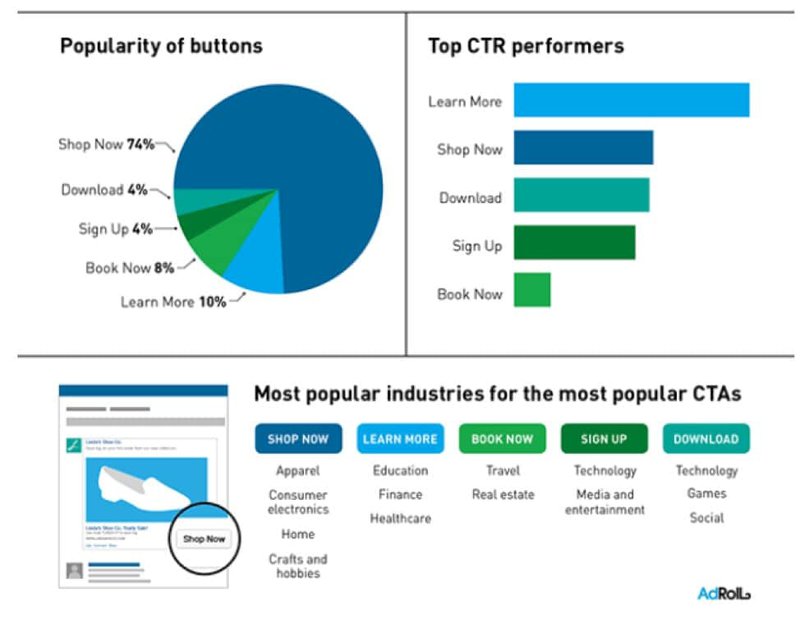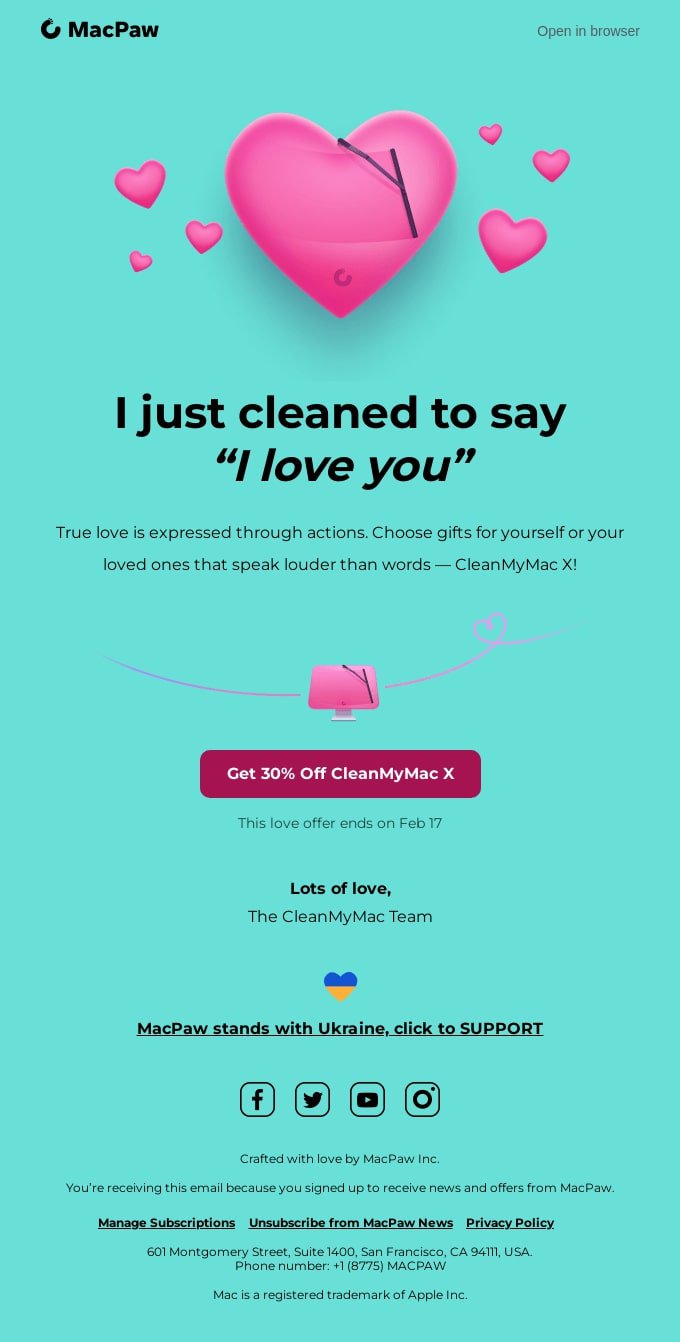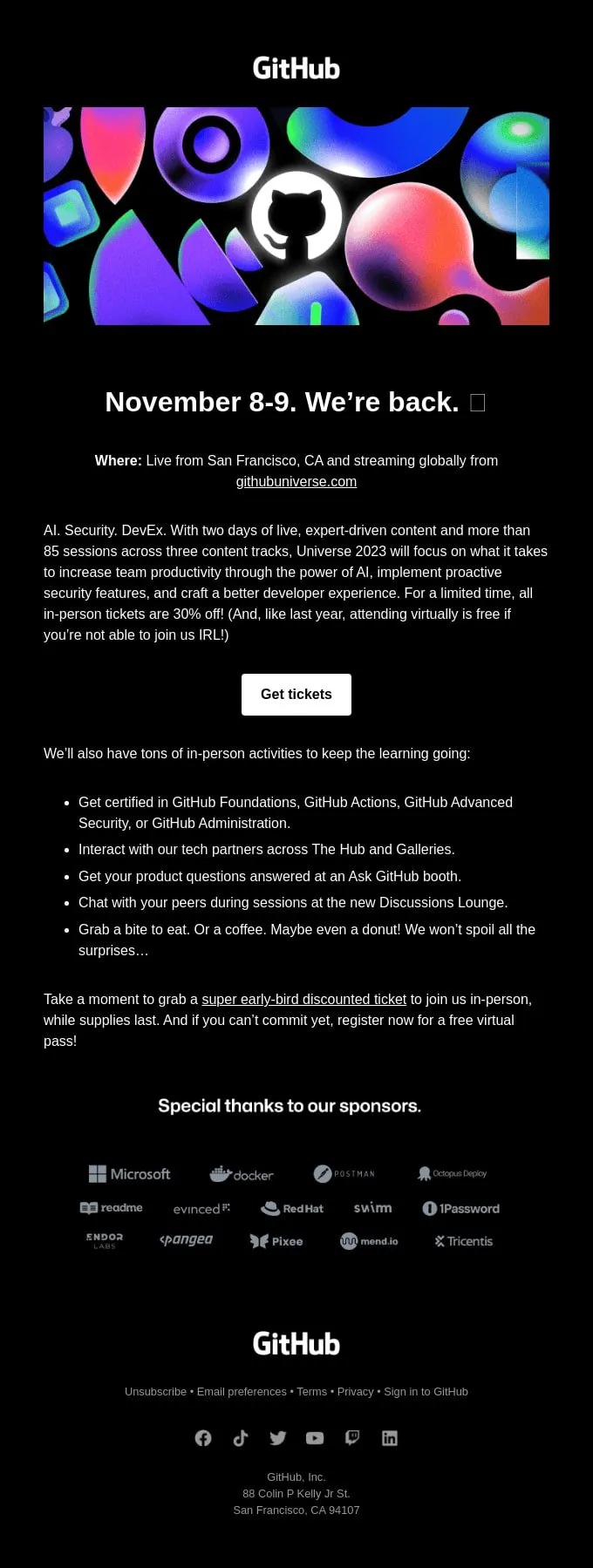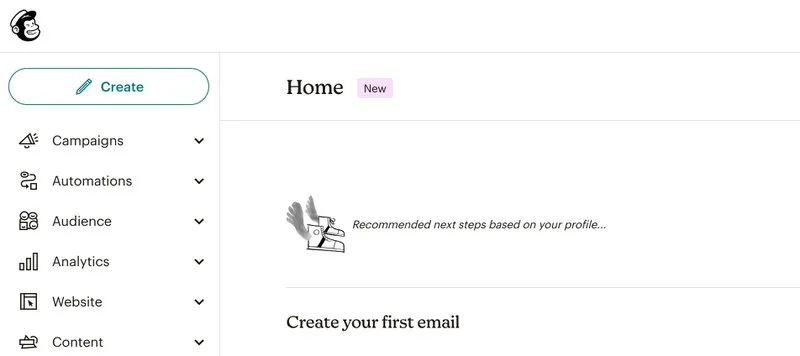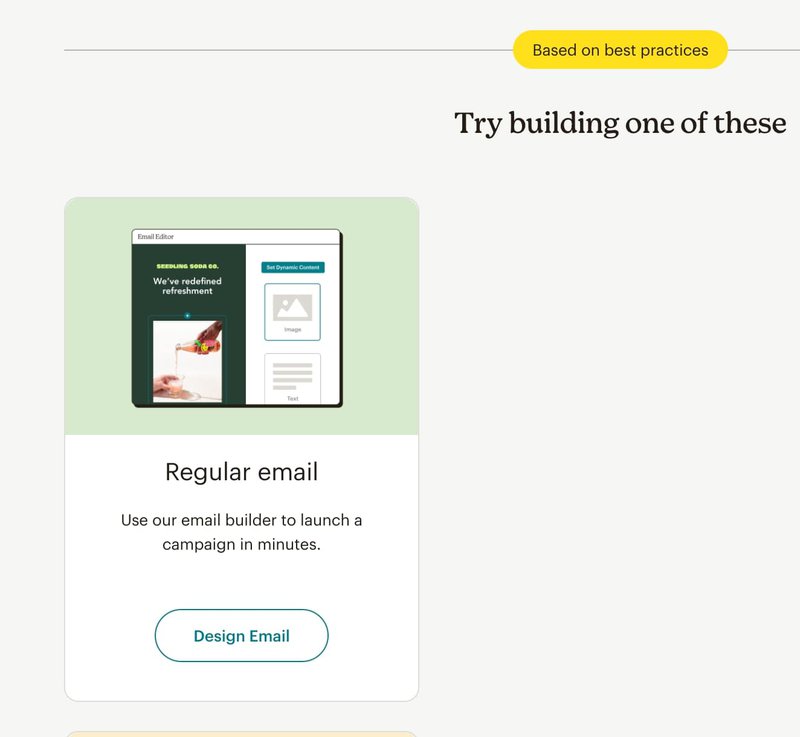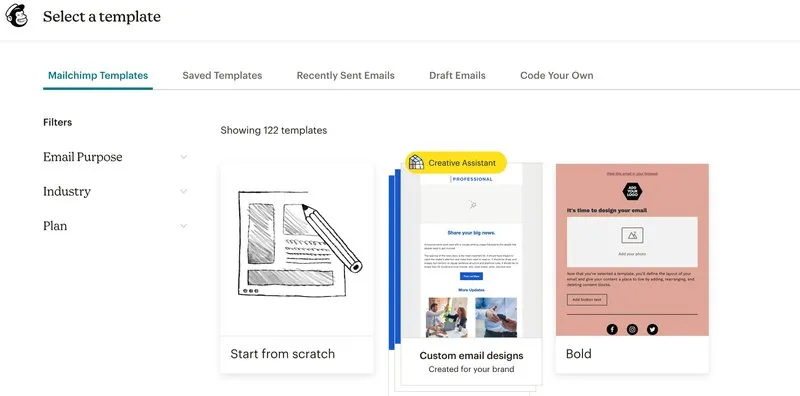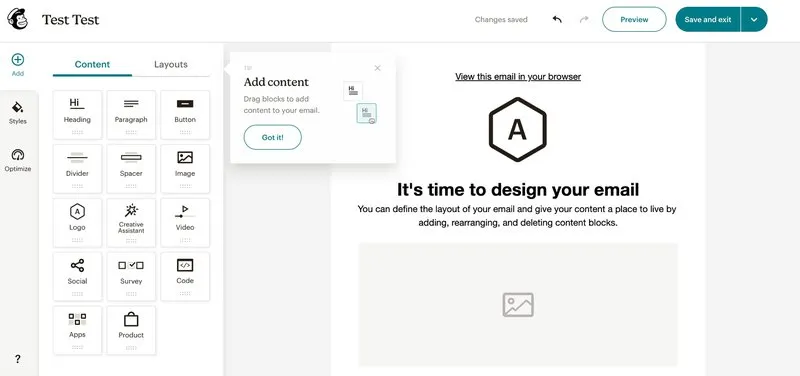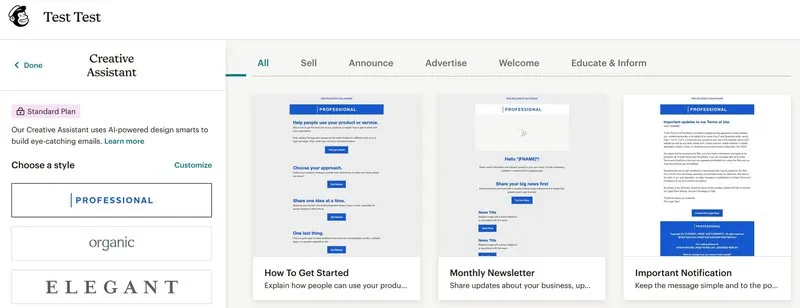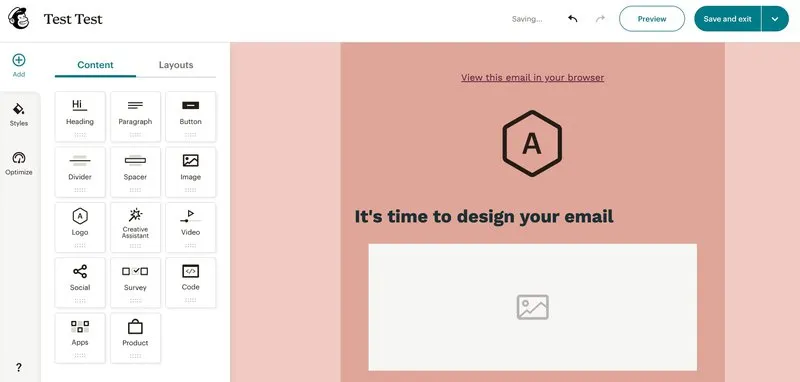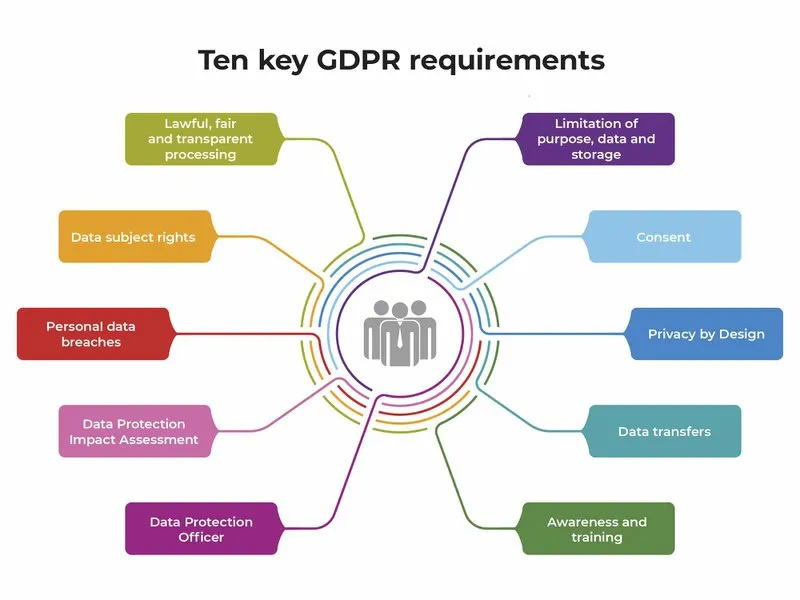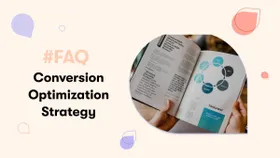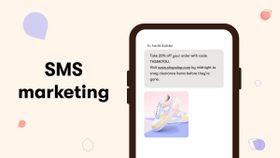How to Create Mailchimp Newsletters From A to Z (+ Examples)
Mailchimp newsletters are an easy way to stay top-of-mind with your audience. If you do it right. Check out our expert tips to learn more.
Updated March 14, 2024.
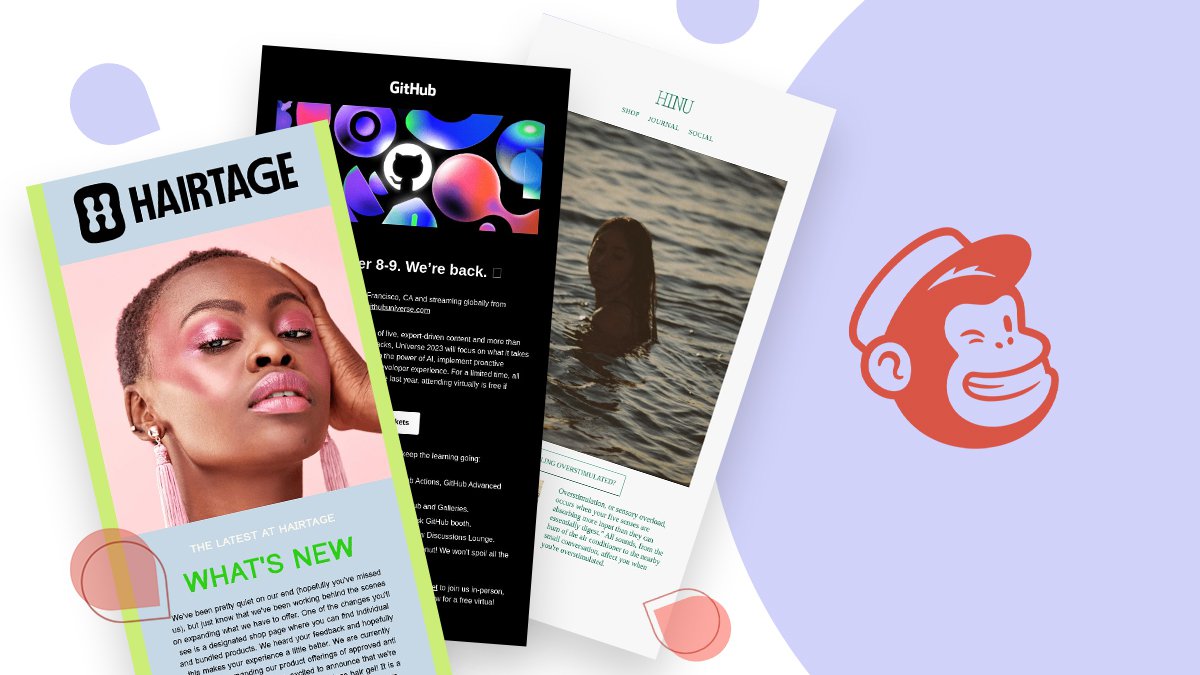
The earliest documentation we have of newsletter subscription dates make to the mid-15th century in Venice. Citizens began signing up to receive regular handwritten letters with the latest news.
About one century later, merchants were using newsletters like these to learn more about the market, taxes, and other business news.
Clearly, newsletters have not only survived but thrived. We don't write them by hand anymore, and we have tools to deliver them automatically – but the essence is the same. Today, a newsletter is both a tool for spreading news and ideas and an email marketing channel to help your business connect with your audience meaningfully.
Consider that 77% of B2B businesses send newsletters, 90% of Americans subscribe to at least one newsletter, and 74% of them get communications from up to 10 businesses.
Given the numbers, you need a newsletter to keep in touch with the people in your email list. And when it comes to email marketing tools, Mailchimp newsletters are, by far, among the easiest and most effective ones to build.
Here's how to leverage Mailchimp newsletters to stand out in busy inboxes and use email marketing to connect with, convert, and loyalize your audience.
What is a newsletter?
A newsletter is a report in print or electronic format, usually containing business news and/or information regarding an industry or niche. These communications are sent to a business or organization's members, customers, employees, or subscribers.
The anatomy of an effective Mailchimp newsletter
Sending a newsletter is easy (you only have to keep reading to find out how!).
Sending a good newsletter people not only open but even look forward to? Also easy, but you need to know some things first:
Have crystal-clear goals and message
Your newsletter isn't just a digital hello. It’s a conversation starter. Defining your objectives and honing your message ensures your content resonates with readers and doesn't get lost in translation.
Having a clear goal with your newsletter also helps you stay consistent. Instead of sending random content, you’ll be able to come up with a content plan that focuses on topics related to what you are trying to achieve, and what your audience is actually interested in reading.
Create an email design that tells a story
Imagine opening a newsletter that looks like a Picasso painting – a tad confusing, right? Your Mailchimp newsletter should be visually inviting, using colors, images, and layout to guide readers seamlessly through the content.
Thankfully, this is quite easy to achieve with Mailchimp newsletters, as they have a lot of email customizable templates you can choose from. You can easily customize them for your business, target audience, and goals.
Content variety that charms
Creating content for your newsletter can be tricky. It has to be useful, compelling, and anything but boring.
The good news is that you don’t need to write a novel with every email. Interesting emails mix different types of content like blog posts, long-form articles, videos, podcasts, customer stories, and even memes!
You can follow patterns for your email layouts, for sure. And you should be consistent, both in terms of design and content. But keep things fresh by mixing the types of content you include in your newsletter to make it more interesting.
Mobile-responsive design
We're in the mobile age, where thumbs do the talking. Statistically, out of 2.6 billion email users, 1.7 billion open their emails on their smartphones. So all your newsletters should be designed to look great on any device, and any email client.
Some of the most important tips to remember when building mobile-friendly email designs include:
- The subject line and preheader should be under 50 characters
- Make sure your call to action is above the fold
- Design with a single-column structure, and avoid using too many images
- Optimize for finger tapping by making all clickable elements large enough
How to create a Mailchimp newsletter
One of the best parts about Mailchimp newsletters is you don't need any technical skills. Once you log into your Mailchimp account and start building the actual newsletter, all you need to do is customize one of the pre-designed templates Mailchimp offers.
Here's a quick step-by-step guide to help you out:
Choosing your newsletter format
Your newsletter format is the sum of its design, layout, and content elements. Some effective newsletter formats include
- Spoils of the week: A weekly newsletter that includes promotions and discounts
- What’s new: An update for your customers on what’s new in your business
- Event program: Keeps attendees informed about event details and activities
- Product updates: An overview of changes and improvements made to your product
Your newsletter format can also stand at the intersection of these examples. For instance, you could create a newsletter with three sections:
- A quick product or company update section
- A more extensive section with content relevant to your audience (curated or from your site)
- A short final section inviting subscribers to a webinar, to download an eBook, or simply to get in touch with you
Why does your newsletter format matter?
Form and function are not opposites; they are complementary. Your newsletter format provides your content with a framework: a model you can (almost) always follow to give your ideas and message a clear, comprehensive, and compelling structure.
In short, some of the main benefits of having a recurrent and cohesive newsletter format include:
- Engaging your audience: A familiar format breeds a sense of belonging. When subscribers recognize your style, they’re more likely to settle in and explore your content.
- Boosting your ROI: An organized format keeps readers navigating longer. The longer they linger, the higher the chances of them interacting with your content or even making purchases.
- Reducing the unsubscribes: People dislike surprises in their inbox – especially unpleasant ones like format changes. Stick to your chosen format to avoid triggering the dreaded unsubscribe click.
- Helping you create a recognizable brand identity: Your newsletter format is like a signature. It’s your way of saying, “This is who we are, this is what we have to say.” The more you stick to the same format (and the more unique your format and message are), the more likely it is people will start recognizing your newsletter.
Take a look at Harry Dry's simple, yet effective and attractive newsletter format, for example:
Newsletter elements you need to (at least) consider
Every newsletter is made of different elements, brought together in a specific, usually recurrent format. Essentially, these elements come down to:
The subject line
Your subject line must stand out, grab the attention, and make subscribers click. The challenging part about this is that you're not only competing against very crowded inboxes but against time itself.
Most people can't read all the emails they're subscribed to, so you need to make sure your subject line is genuinely exciting, interesting, and personalized when possible.
Want to make your email newsletters stand out, every time? Hire an email copywriter vetted by Mayple. We only work with the best of the best, and we're ready to match you with the right copywriter for your business in a matter of days!
The preheader
The preheader serves as a teaser to the email's content. It's usually displayed right after the subject line, so it can be a continuation of that sentence or even a punchline of sorts. For example, if your subject line is "We just launched!", the preheader could be “Check out the new ____ feature.”
The featured image
Just like a book cover, your featured image (or headers) should be a visual hook and give readers a sneak peek into the newsletter. Most often, featured images will either be the same across all the newsletter issues or based on an issue's theme or main topic.
The company logo
Instant recognition is key. Your logo is your digital signature, reminding readers of your identity, so make sure you place it in a visible, yet non-intrusive place in your newsletter.
Most often, the company logo appears in the header of the newsletter, but some businesses opt for a more subtle approach and integrate their logo subtly in the background of the email or at the beginning of the first section.
The background
While not the star, a background that complements your content and aligns with your brand’s aesthetics adds an extra layer of professionalism. A simple, white background makes your newsletter look professional, but sometimes a solid-color background or a subtle background image adds an extra touch of color and character.
The headline
Just like the subject line, the headline's main goal is to keep people reading. They've opened your email, they saw the header, but now it's time to draw them in. Craft a headline that’s part magician and part storyteller. It should pique interest and promise something valuable.
The layout
A neat, organized layout is your readers’ tour guide. Keep it simple, intuitive, and aligned with your brand. Also, try to keep it the same across all the newsletters you send. Consistency breeds recognition – readers will start recognizing your newsletter's structure and style, which makes them more likely to open each issue in the future.
The graphics
Humans are visual. We need visual information to effectively digest the text. Spice up the textual feast with graphics like GIFs, memes, and infographics – whatever suits your content and your audience’s taste.
Images, GIFs, audio clips, or videos should also be present throughout the newsletter, just make sure they are optimized for mobile viewing.
And don't forget about the ALT text! It's essential for ensuring that even if people can't see or turn off the graphics in their email clients.
The copy
Your words are the soul of your newsletter. Make them concise, engaging, and brimming with personality. Also, ensure every sentence, paragraph, and section in your newsletter helps you deliver a clear message. No rambling, no fluff, no unnecessary words – just a smooth reading ride that takes your subscribers from A (your subject line and heading) to Z (your call to action).
The call to action (CTA)
Don’t let your readers wander aimlessly. Guide them with a clear, compelling CTA that tells them what to do next. The key to effective CTAs is to make sure they are visible, relevant, and actionable.
Some emails will include two different CTAs, one at the beginning, right above the fold, and another at the end, once the message has been delivered. For instance, if you run a SaaS business that sells to both Enterprise and SMB companies and you haven't segmented your list, you can include a "Let's schedule a call" and a "Subscribe now" button.
This is not necessarily wrong, but it can create confusion for your subscribers and keep them away from taking action – which is, in fact, one of the main reasons you should segment your email list as much as you can.
The footer
This is where you can include contact info, social links, customer reviews, or other forms of social proof, as well as unsubscribe and update email preferences links. Your footer doesn't have to be fancy or well-crafted, but it has to be easy to read and to the point.
Types of Mailchimp newsletters
Mailchimp allows you to create a newsletter in a matter of minutes, and that's largely due to the fact that they have pre-built templates you can just pick up, customize, and use as you please.
Some of the main types of newsletters you can build in Mailchimp include:
Informative/ educational newsletters
This type of newsletter is all about informing readers about industry-related topics. You could present in-depth research, report on exclusive interviews and surveys, or deliver the latest news from your niche.
The main goal of such newsletters is to educate the audience, keep them engaged, and establish yourself as an authority in the industry.
Pro tip: want to run your own survey to engage your audience? Check out Mailchimp's survey feature.
Holiday-themed newsletter
Holiday-themed newsletters are all about specific celebrations like Christmas, Halloween, and Valentine’s Day.
Such newsletters can bring some fun into the mix while reflecting your brand. The sky is the limit when it comes to design and creativity; just make sure you don’t take yourself too seriously in the process.
Very often, these newsletters include some sort of offer, discount, or freebie connected to the event. For instance, if you're sending a Valentine's Day newsletter for a fashion eCommerce email marketing campaign, you could offer a discount voucher for all the pink or red items on your site.
Promotional emails
Got a deal that demands attention? A promotion-driven newsletter hollers it out loud, ensuring no one misses the memo. Most businesses send these out either regularly (e.g., every week, to update shoppers on the latest offers on the website) or on specific days (like Black Friday, Cyber Monday, and Winter Sales).
Community-driven newsletters
Community newsletters shine a spotlight on user-generated content, testimonials, or community members to foster a sense of belonging. They can be used by businesses (especially those with a strong community), governmental or local institutions, membership sites, or non-profit organizations.
Product showcase and updates
If you run a product-driven business (such as a Software as a Service), you can use this type of newsletter to unveil the virtues of a particular product or service with a spotlight that leaves readers itching to learn more.
Also, you can use this newsletter to send updates on feature releases, patches, bug fixes, etc. This way, you can stay connected with your clients even after they’ve purchased from you and increase customer satisfaction, loyalty, and even advocacy.
Monthly digest newsletters
Monthly (or fortnightly or weekly) newsletters act as a regular rendezvous that serves the best from your content kitchen, keeping subscribers informed without overwhelming them.
This type of newsletter is usually a blend of other types of newsletters and it typically includes the most popular blog posts, the latest news from your business, product or service updates, and much more.
Automated email flows
As a general rule, automated email flows are seen as a different category of email marketing communications. They're used to welcome new customers, send drip email sequences to leads, send browse abandonment reminders, or order confirmations.
However, newsletters can include automated email flows, as well. For instance, when someone subscribes to your newsletter, you can include them in an email series that showcases some of the most important pieces of content you've published.
Event-driven newsletters
Hosting an event? Keep attendees in the loop with updates, schedules, and all the nitty-gritty they need. Your event-driven newsletters can also include social proof, sneak peeks, and exclusive offers reserved for attendees.
Internal (employee) newsletters
Newsletters aren't just for the audience outside. Keep your team informed and motivated with an internal newsletter that connects the different departments and keeps everyone in the loop.
Your internal company newsletter can include product updates, stock updates, employee spotlights, organization news, inspiring tips, and much more. You can even use it to promote your company culture and values to attract top talent.
How to build a Mailchimp newsletter step by step
As you'll see in our quick tutorial at the end of this section, building a Mailchimp newsletter is very easy from a technical standpoint. If you want to make the most out of it, however, you should consider the following steps:
Brainstorm themes and ideas
If you want your newsletter to be successful, you need to create a strategy for it (as opposed to “winging it”).
Start by brainstorming the topics you would like to cover. You can use a tool such as AnswerThePublic or Google Trends to identify keywords related to your niche, and then develop content ideas around those topics.
Consider your
- Audience – what they like to read and how that taps into your business
- Competition – take note of their newsletters, both in terms of email content and email design
- Industry – consider trends or news that might influence your business, your message, and your overall email marketing efforts
Create your campaign in Mailchimp
To create a newsletter in Mailchimp, you will have to:
1. Click on "Create."
2. Go to "Regular" and click on "Design email."
3. Add "To." These are contacts in your email list who've subscribed to your email newsletter with your Mailchimp form, which should go in a specific subscriber list.
4. Add a "From" email address and name.
5. Add an email subject line and preview text.
6. Add a send time.
7. Click on "Design email." At this point, you will be redirected to the email templates page in Mailchimp, from which you can:
- Start from scratch, and use the drag-and-drop editor to create your own template.
- Use the "Creative Assistant" to create different types of brand-coordinated emails – including, but not limited to newsletters.
- Select from one of the wide range of available templates. You can filter them by email purpose, industry, and plan.
8. Customize your Mailchimp newsletter content and design.
9. Test and send. Once you've created your email design and content, remember to send a test newsletter to yourself, and maybe a few people in your team, to check that everything looks good in the major email clients and on different devices. If all is OK, hit the "Send" button – and voila! You have just sent your first Mailchimp newsletter.
Want to get better results? Check out our Mailchimp A/B testing guide.
Now it's time to analyze the results and think about how you can improve future campaigns.
Consider the privacy and consent requirements
Considering the privacy and consent requirements for any email or newsletter campaign is important. This is a legal requirement according to different sets of regulations applicable to subscribers from other geographical areas (e.g. GDPR for the European Union, CCPA for California, etc.).
You also want to make sure your email marketing practices are ethical and customer-centric. There's no point in sending emails to someone who'll never read them. So even if buying an email address list off of the internet sounds like a great idea, it isn't. Not from a legal standpoint, and not from a business one.
To ensure that you meet basic privacy and consent requirements,
- Ensure that all contacts have given their explicit permission to receive your emails, or "opted in."
- Inform the subscribers about the kind of content they will be receiving in exchange for giving you their email address.
- Provide an easy way to unsubscribe from your list.
- Do not set any hidden fees or charges associated with subscribing to your newsletter.
- Include a physical address for your business in the footer of your email.
Regarding your email subscribers' explicit consent, there are two main types of consent you can ask for:
- Double opt-in (for higher conversion rates but lower list size): Require your subscribers to click on a confirmation link after subscribing.
- Single opt-in (for a larger list of subscribers, but a lower engagement rate): No extra steps are required to confirm the subscription.
Keep consent records
Aside from asking for your subscribers' consent, keeping records of consent is essential in case you need to prove it later. In Mailchimp, this is easy to do when you use the Mailchimp signup forms to collect the subscriber data (and it can be done if you connect your Mailchimp account to other subscription form builders too.)
Want to make sure you're using Mailchimp correctly? Check out our guide to Mailchimp's CRM features.
Mailchimp newsletters: a way to connect, inform, and engage
Email newsletters are a great way to keep your subscribers engaged and informed about your brand and products. With Mailchimp, you have all the tools you need to create beautiful email campaigns that deliver great results.
Remember your newsletters should be about more than just sharing bland information. They should elicit excitement, build bridges that connect you to your audience, and inspire them to take action. Your newsletter isn't a one-way communication channel — it's an opportunity to build relationships with your subscribers.
Looking for a pro to help you nail your email marketing and get the results your business needs? Contact Mayple and let us match you with one of our vetted email marketers!
FAQs
Is Mailchimp newsletter free?
Yes, you can send Mailchimp newsletters for free. You will have access to all of the basic features you need to start your email marketing. You can also have up to 500 subscribers and an email send limit of 1,000 sends per month. If you want to test out your new email tool, this is a good opportunity to do so.
Can you do a newsletter in Mailchimp?
Yes, absolutely! You can create newsletters in Mailchimp and manage them easily and efficiently. Additionally, Mailchimp also offers marketing, analytics, and creative tools for your regular email newsletters and the other email campaigns you may send.
How do I write a newsletter in Mailchimp?
If you want to write a newsletter in Mailchimp, you will have to create a regular campaign, select from one of the customizable email templates (or build your own), add your emailing details and content, and then send it out.



